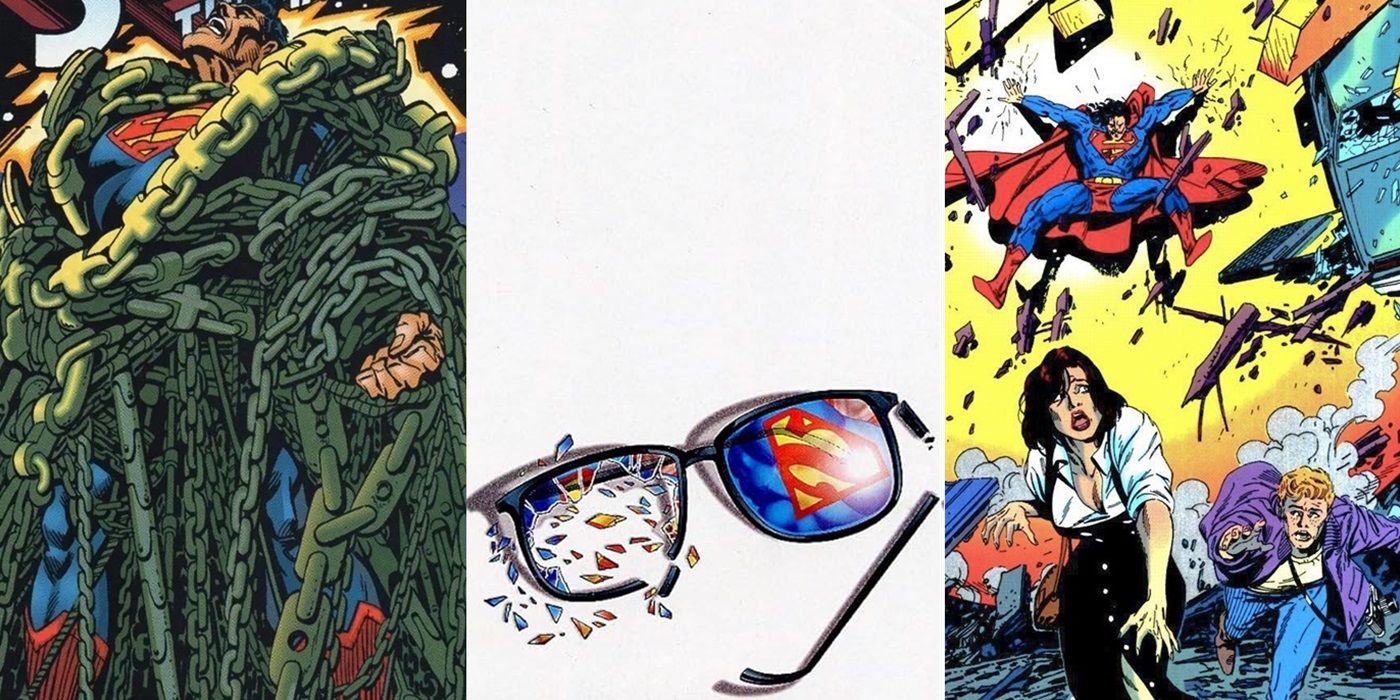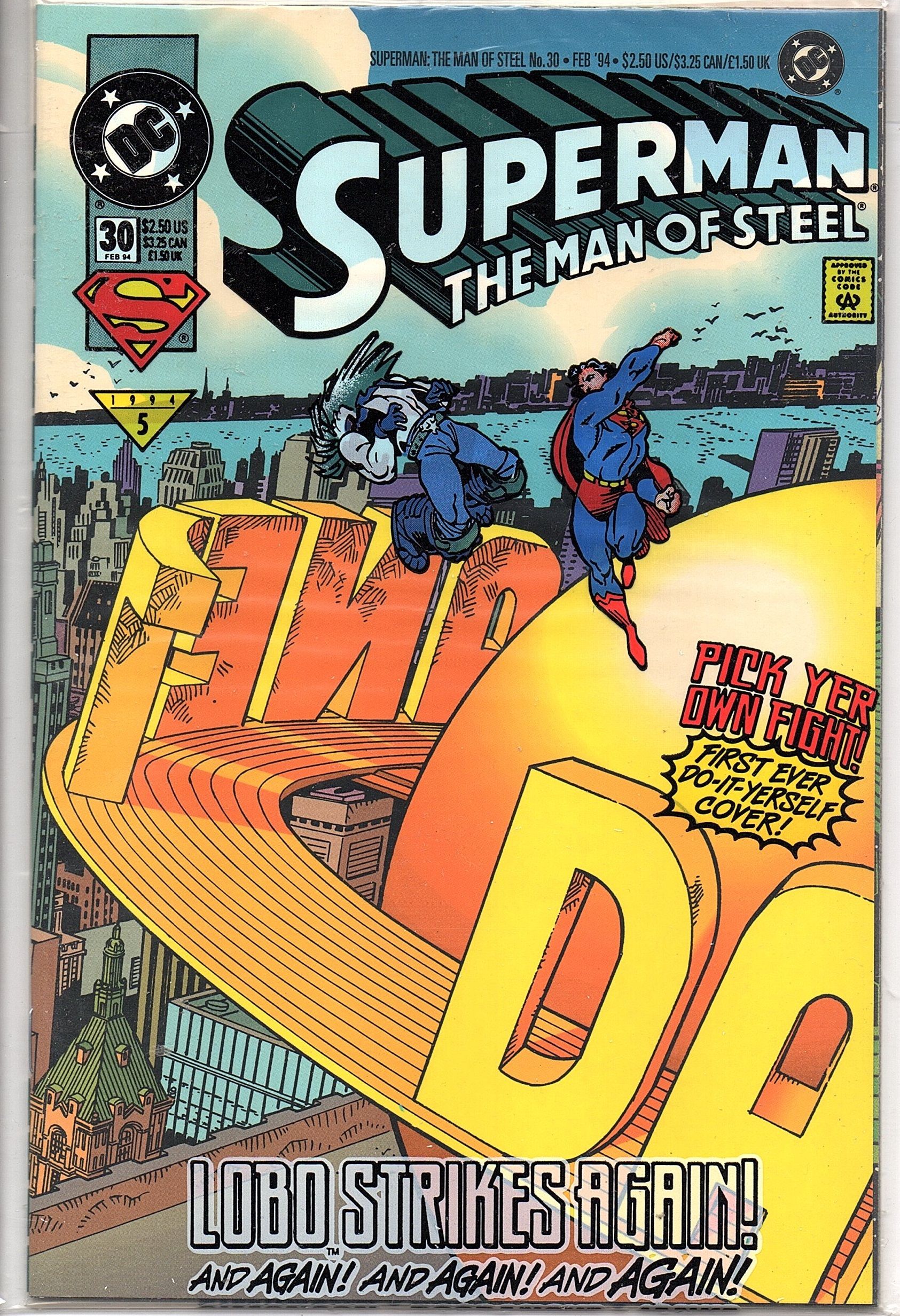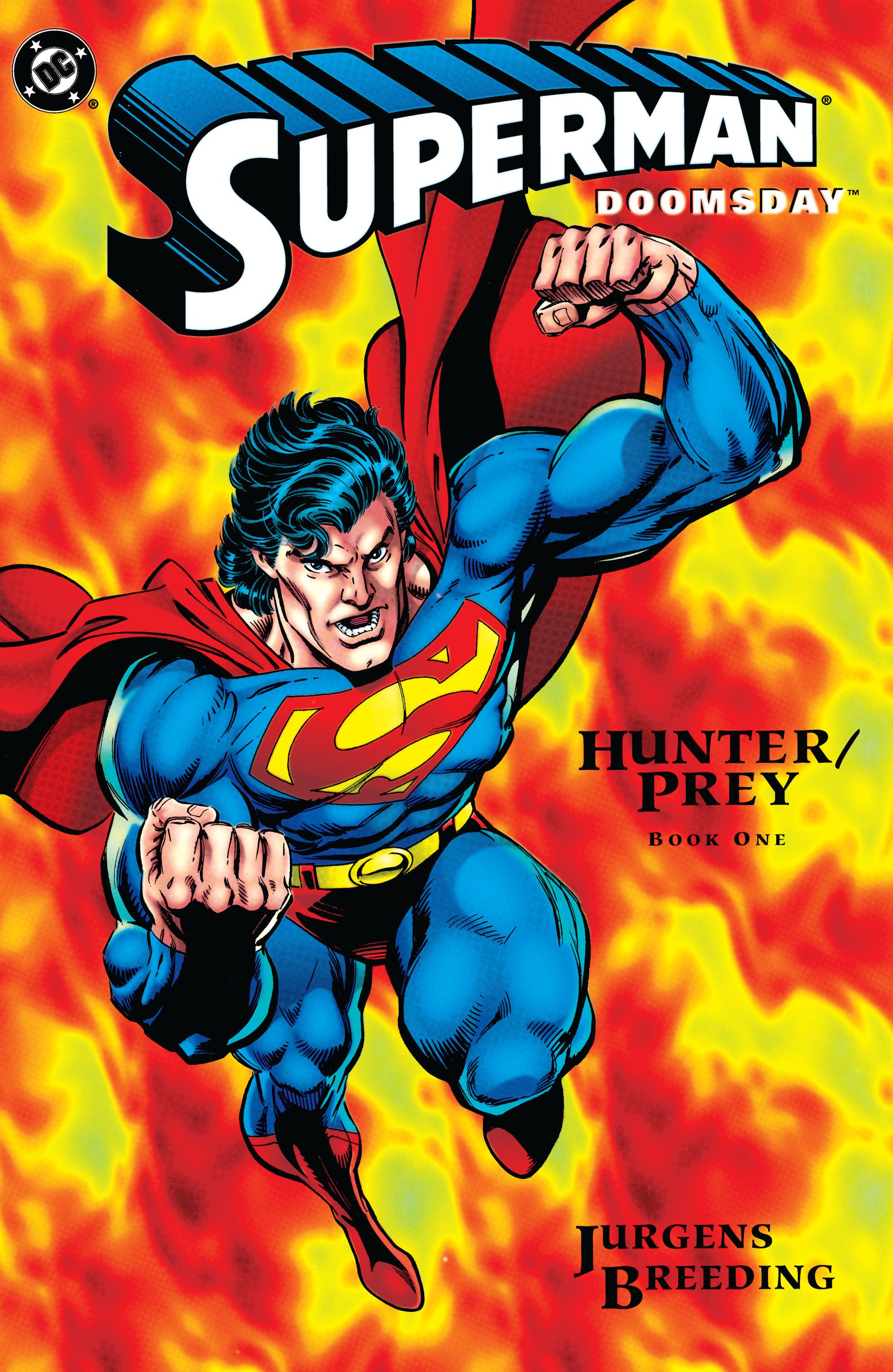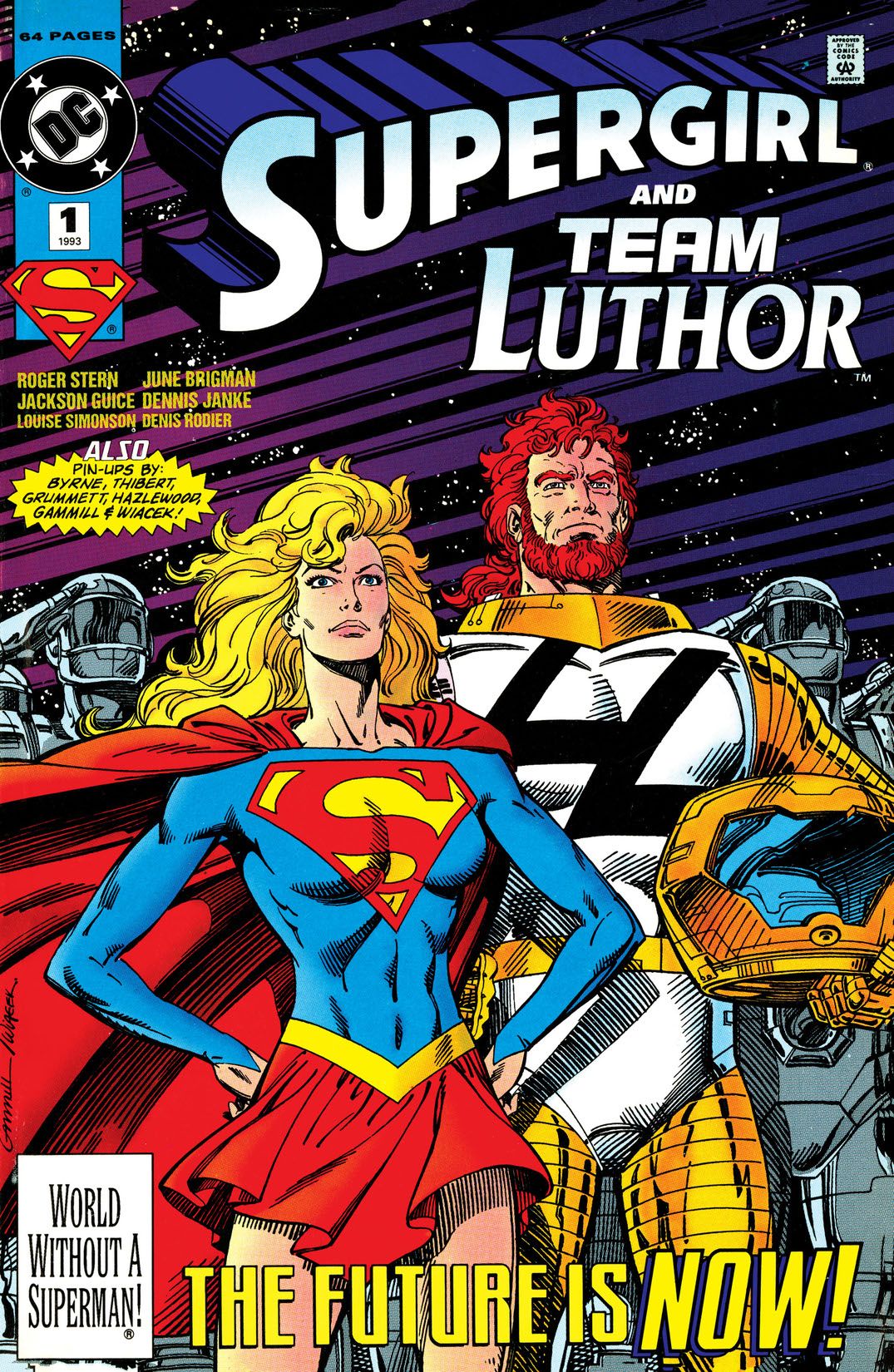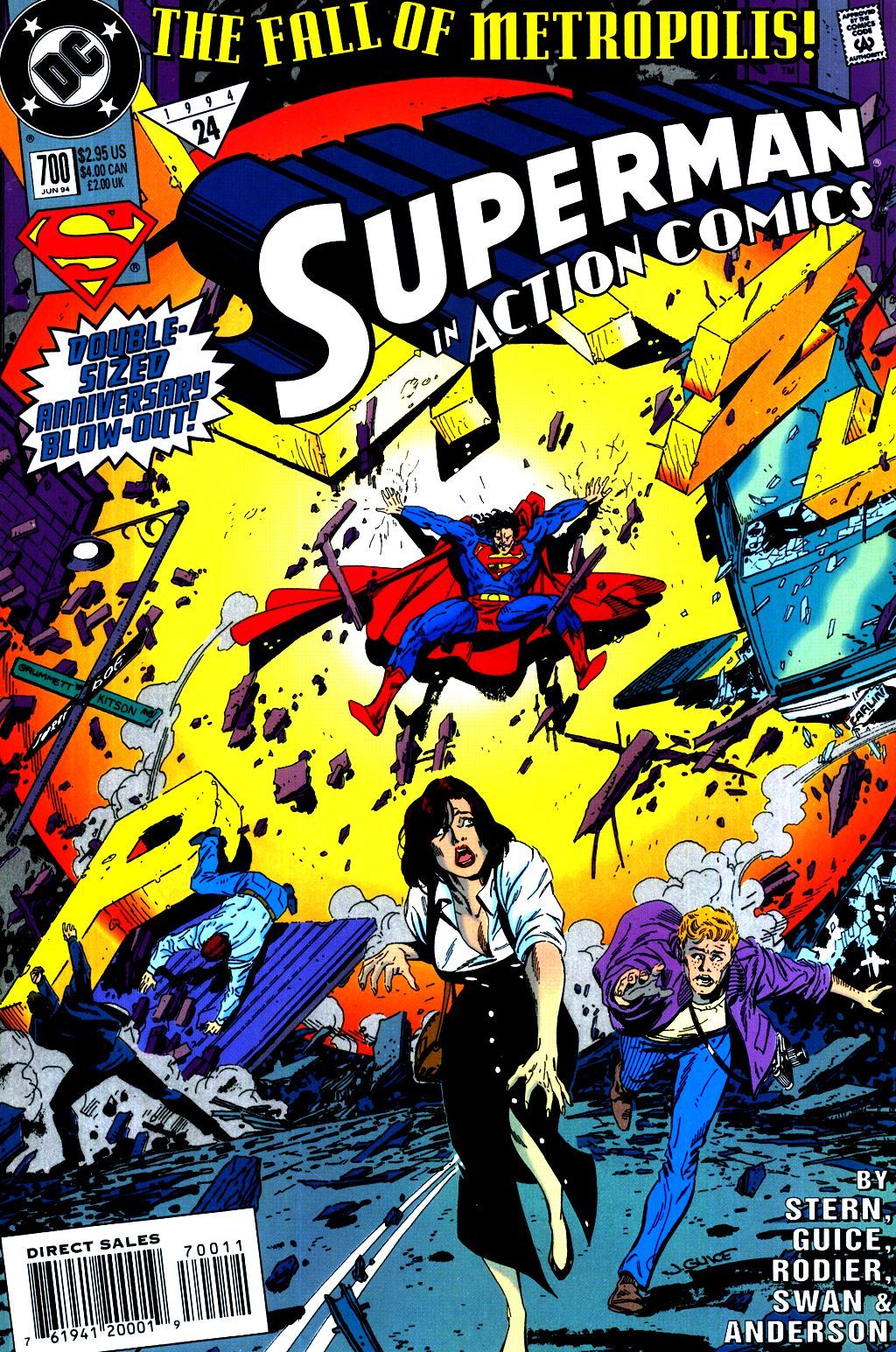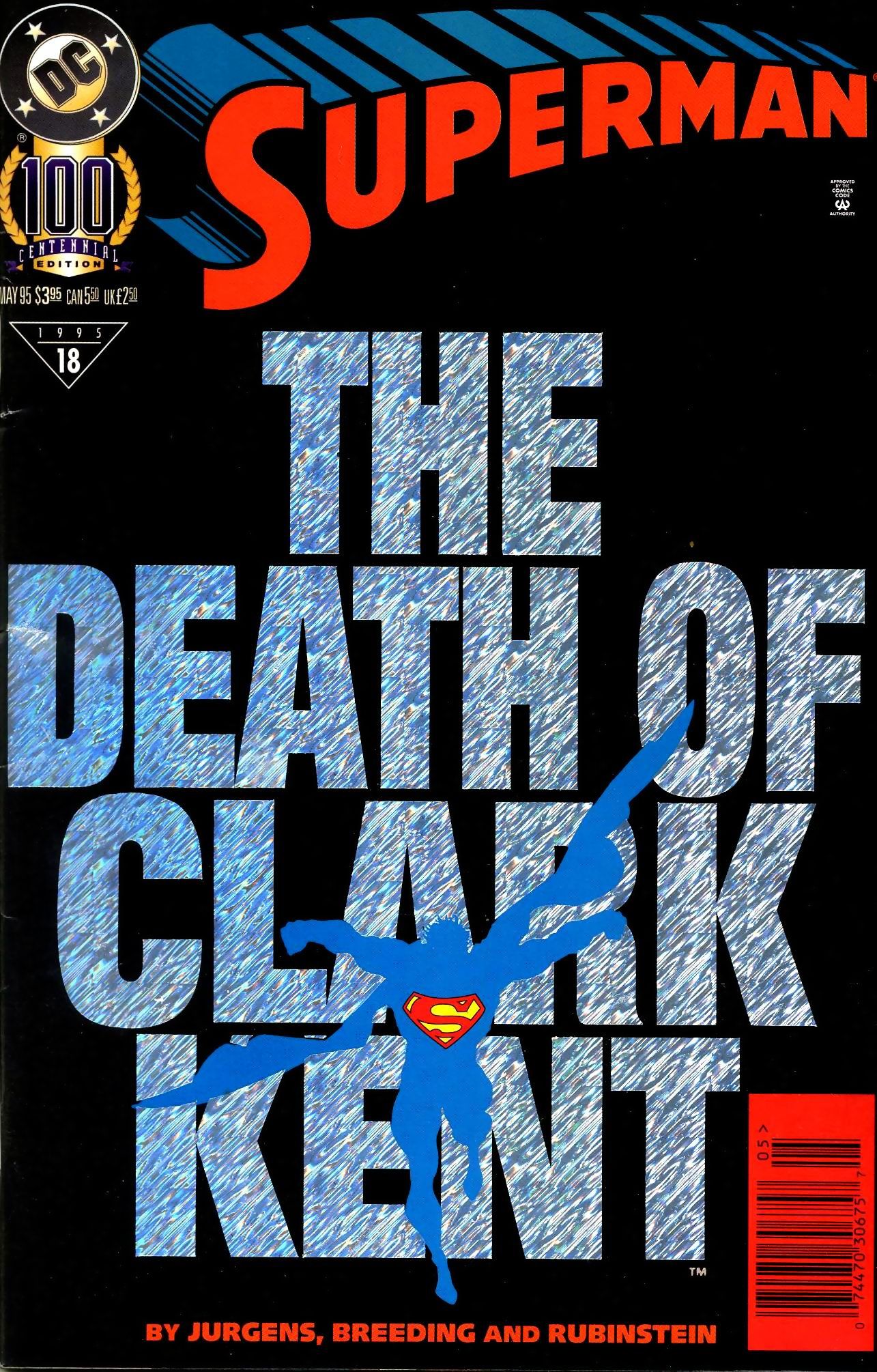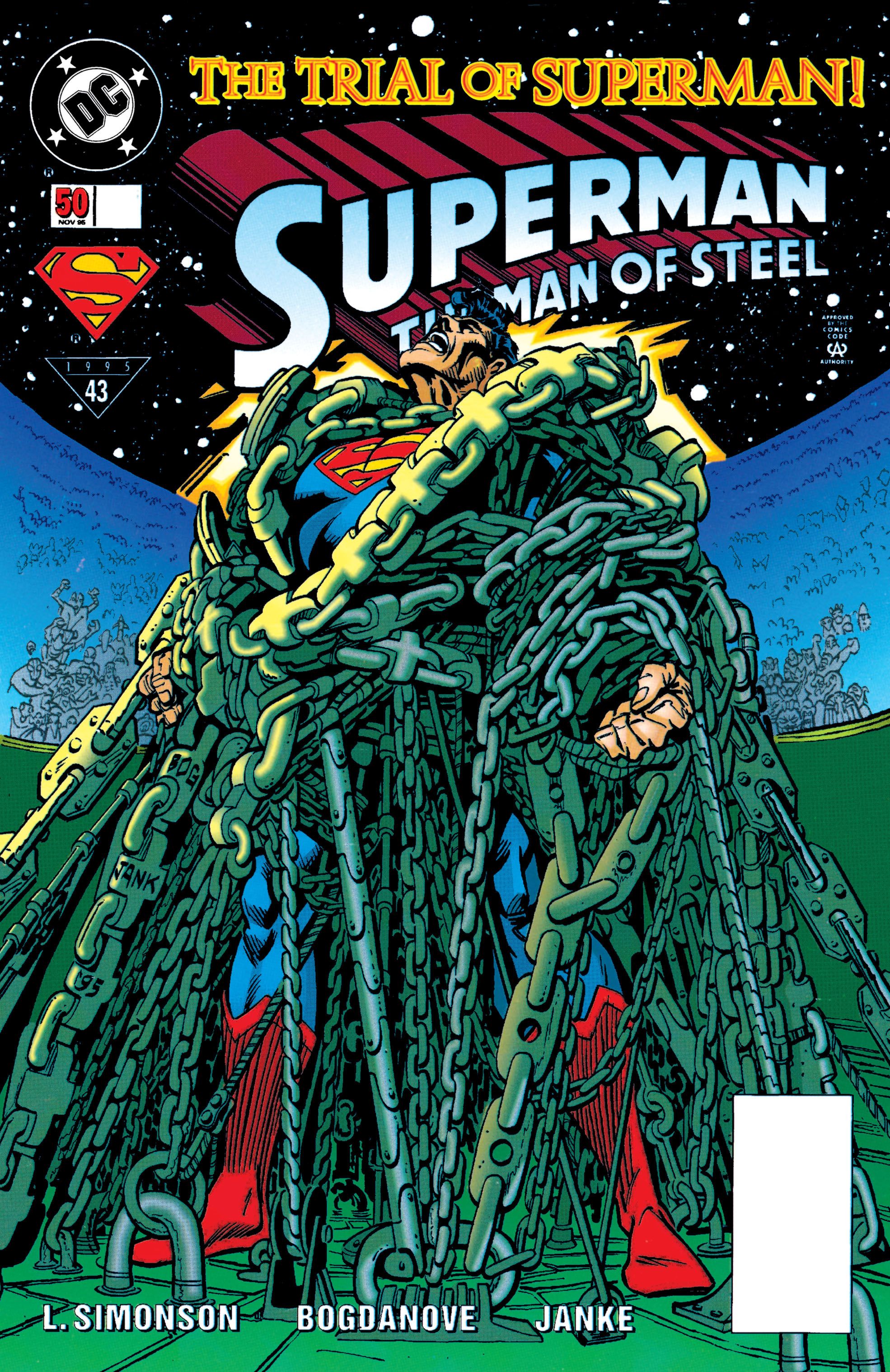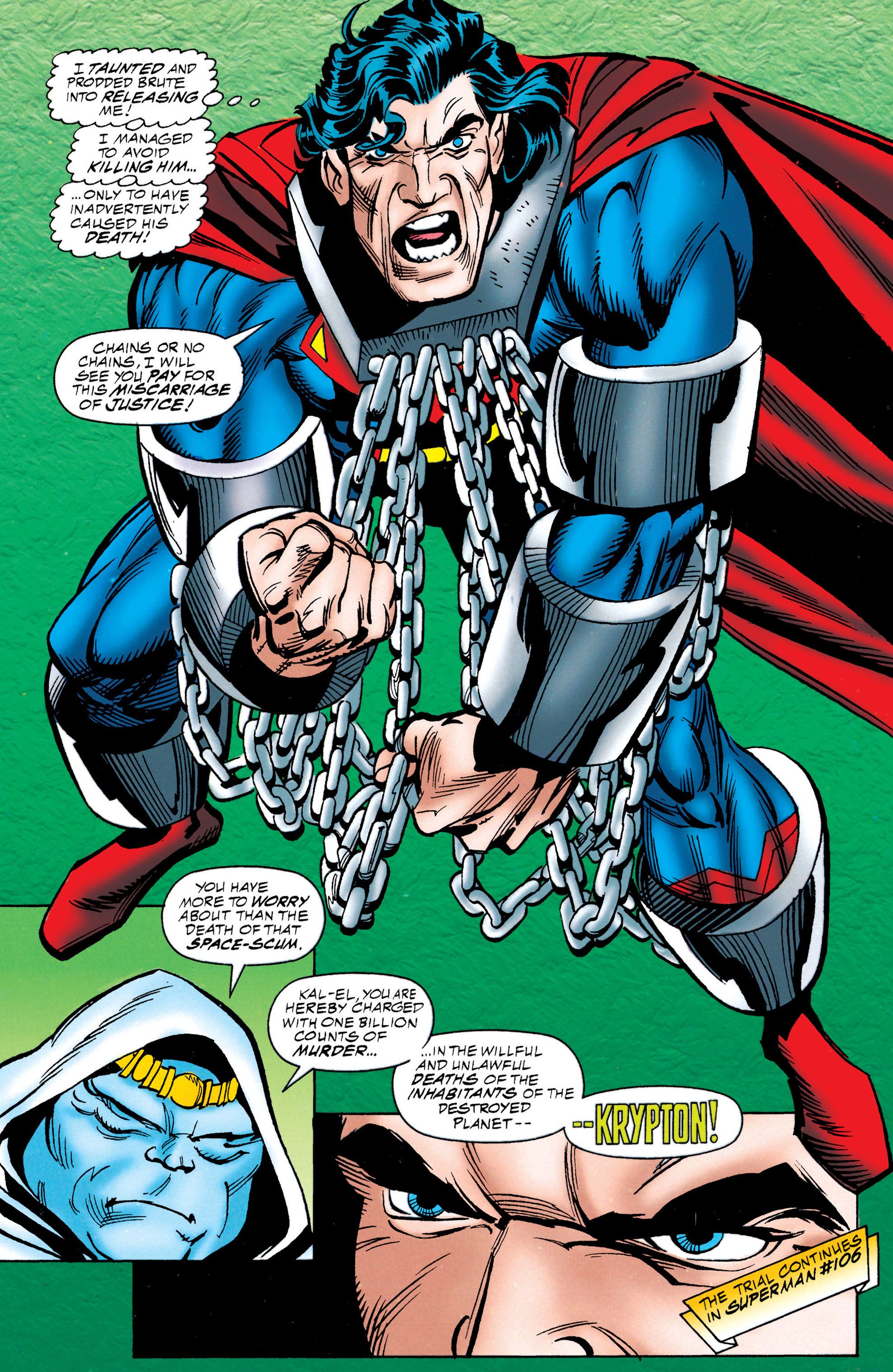Knowledge Waits is a feature where I just share some bit of comic book history that interests me. Today, we look at how the Superman titles handled the arduous task of following up the success of The Death of Superman and The Reign of the Supermen.
In the early 1990s, the Superman titles were already heavily interconnected, and eventually, in 1991, they took a step further by adding a fourth title, Superman: The Man of Steel, and just literally having the stories continue from one title to the next, with a Superman triangle on the covers to tell you what order to read them in. So if you read Superman: The Man of Steel #4, the story would continue into Superman #60. Each title would still have its own distinct subplots, but they would be within the context of an overall connected plot. Plus, they would all share some subplots, as well (like when Jimmy Olsen was fired, he slowly descended into homelessness, before rising back up, and getting his job back).
Therefore, with such an interconnected setup, the Superman creators would naturally have to meet up to coordinate the following year’s worth of stories, including ideas for big events, stuff like that. At one of those “Super Summits,” the idea for The Death of Superman was conceived, and so it was implemented in 1992, as one of the best-selling comic book events of all-time. Okay, that was very impressive, but killing off a character is one thing – how do you get people to follow the RETURN? And the Superman titles handled that beautifully, with the epic Reign of the Supermen, introducing four possible new “Supermen,” while then returning the ACTUAL Superman to the comics in the process (while now having two new superheroes in Steel and Superboy with enough appeal to land their own comic book series, as well). It was remarkable. The Superman titles never sold POORLY, I mean, they DID sell enough to come up with FOUR of them, ya know? But now, the books were must-reads that stood out, sales-wise, in a sea of huge comic book sales in 1993.
So…well…how do you follow THAT up?
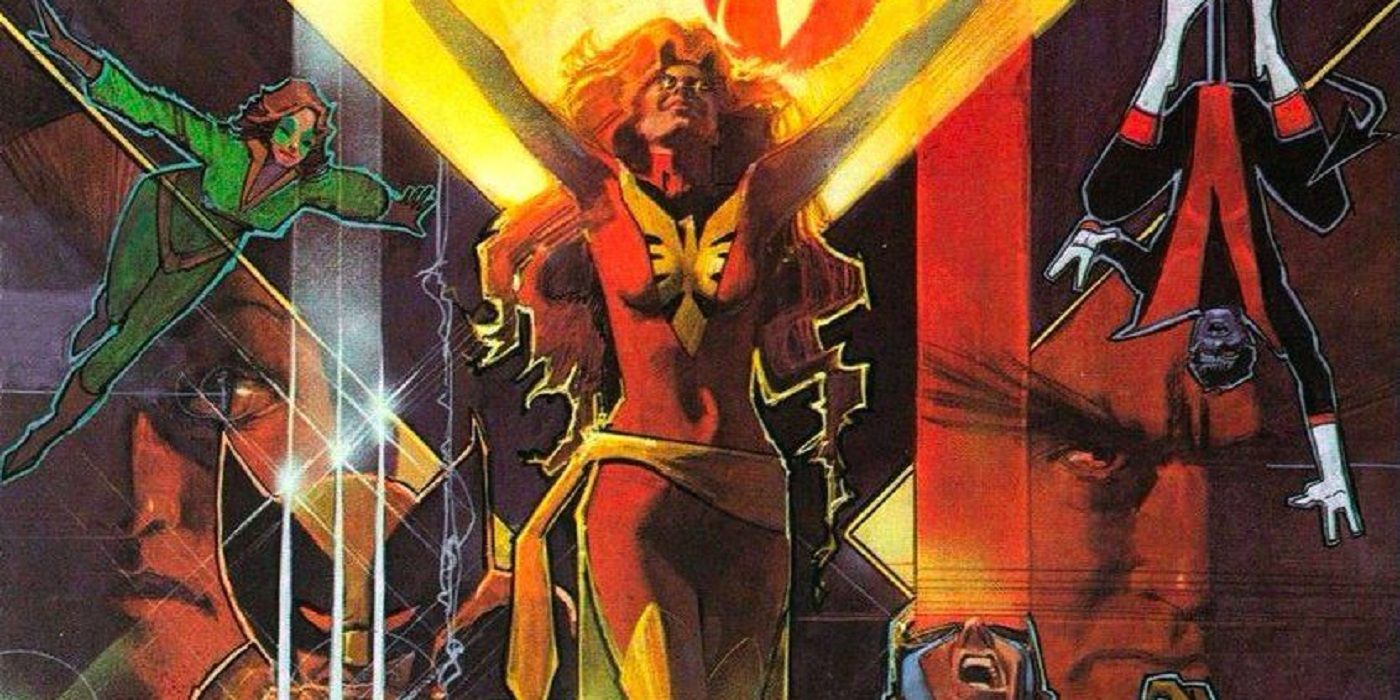
How Comic Book Fans Mistakenly Claimed the Term ‘Trade Paperback’ as Theirs
Unfamiliarity with book terms led comic book fans to adopt a standard book term, “trade paperback,” as a comic book term
How did the Superman titles follow up the Death and Return of Superman in 1994?
Now, obviously, I could spotlight the entire era right up until the 1999 “reboot,” but honestly, I’m mostly just interested in seeing the IMMEDIATE reactions of the Superman office, so I’m only going to look at 1994 and 1995. You have this huge new audience – how do you try to keep it?
One funny thing before 1993 even ended was that, in the 1990s, “gimmick covers” were seen as sort of status symbols, of a sort. They typically denoted sales increases, and a company willing to spend the money on a gimmick cover for your book was a sign that the company cared about your book. As I noted a few years back, when the Reign of the Supermen started following the Death of Superman, all four Superman titles got a die-cut gimmick cover for their respective first issue (featuring the Superman logo of each of the four possible Superman replacements).
Well, when the story ended, it ended in Superman #83, which had a “Chromium” gimmick cover. Then, to celebrate the official return of the Man of Steel, Adventures of Superman had a shiny gimmick cover. So that left Action Comics and Superman: The Man of Steel as the only two Superman books WITHOUT a gimmick cover that year. So in November 1993, Action Comics #695 had a foil cover for no particular reason and the following month, Superman: The Man of Steel had basically a Colorforms cover.
It was not OFFICIALLY a Colorforms cover, since DC didn’t bother actually paying Colorforms to do it. The company just made its own vinyl clings.
Lobo comes to Earth to fight Superman just for the sake of fighting him (the non-gimmick cover made fun of the concept by just having the word “fight” printed repeatedly on the cover) and the whole thing took place in the issue (by Louise Simonson, Jon Bogdanove and Dennis Janke), but the cover was released sealed in a polybag…
Okay, so 1993 ended with everyone having their gimmick covers, so we head into 1994. Much of 1994 was tied up in outside crossovers, as DC had the Zero Hour event, which led to the Superman titles all doing #0 issues midway through the year (introducing an old friend of Clark Kent’s from Smallville, Kenny Braverman, who learned Clark’s secret identity, and became a supervillain, Conduit, as he believes that Clark being an alien is why Clark was always better than Kenny at everything, so he blames Clark for everything). There was also a crossover with the Milestone Media titles.
Probably the most notable event of 1994 involving Superman was also not in the Superman titles proper, but in a prestige format miniseries. Superman/Doomsday: Hunter/Prey was a three-issue series by the creative team of Superman #75, Dan Jurgens and Brett Breeding, that saw Superman have a rematch with Doomsday, while also revealing Doomsday’s origins, roughly a year after Superman #75 came out.
It’s interesting, this story was definitely a big deal at the time, and it sold quite well, but I think that while AT THE TIME it made perfect sense to do it in this format (as it was, like, $5 an issue, in 1994!), for the sake of posterity, it not taking place in the Superman books proper made it a bit easier of a storyline for history to forget. Had the Superman/Doomsday rematch taken place in the Superman titles themselves, it would almost certainly be better remembered.
So yeah, with all of those OUTSIDE crossovers and prestige miniseries, there wasn’t a ton of room for major events in the Superman titles proper, but one major event was designed to coincide with the 700th issue of Action Comics. Lex Luthor had seemingly died a few years earlier, but had returned in a cloned body, pretending to be the much-younger Australian son of Lex Luthor, Lex Luthor II. Lex Luthor II had long red hair, and convinced everyone that he was a good guy. He even dated Supergirl, and they had a shared one-shot during the period when the Superman books were on a hiatus (because Superman was “dead,” don’t ya know?)…
Over time, Luthor couldn’t help but do awful things just because he COULD. In a clever twist, the final issue of the “Funeral for a Friend” storyline, which was the final issue of Superman entirely, for a few months before the books returned with the “Reign of the Supermen” ended with two awful things happening. One, Jonathan Kent appears to die of a heart attack and two, Lex Luthor murders his martial arts instructor because she embarrassed him in front of Supergirl and Lois Lane. It was this big ol’ “Thing are awful without Superman” bit right before the series seemingly ended for good.
Well, as it turned out, the murder of that martial arts instructor was eventually leaked to Lois Lane, who proceeded to investigate Luthor even as he pulled all of his strings to ruin her life in the process, including blowing up her apartment to get rid of the videotape evidence of Luthor’s crime.
The problem for Luthor is that his cloned body was starting to deteriorate, and so he basically declared war on Metropolis, sending various factions after each other to destroy the city and Cadmus (the cloning facility who he blamed for his clone body falling apart). Part of this is by unleashing a virus that is slowly killing any beings created by Cadmus, including Superboy (who was cloned from Superman).
The whole thing culminated in Roger Stern’s swan song on the Superman titles, Action Comics #700 (art by Jackson Guice and Denis Rodier, plus a story by Curt Swan and Murphy Anderson featuring the marriage of Lana Lang and Pete Ross), “The Fall of Metropolis,” where Luthor decides that if he can’t be in charge of Metropolis, he’ll destroy it….
Superman saves most of the city, but there was still some major damage, including the Daily Planet’s Globe falling down, as shown on the cover.
After Zero Hour, there’s also a notable storyline where Brianiac tries to convince the world that Superman never DID return from his death against Doomsday. That storyline was called “Dead Again,” and it amusingly launched around the same time as Spider-Man’s Clone Saga, so there were briefly simultaneous stories involving a clone of Spider-Man and a possible clone of Superman. I even did a legend years ago on whether “Dead Again” changed its ending because of the Clone Saga (it did not).
So that was 1994, a relatively subdued year for events, so to make up for it, 1995 saw TWO events!
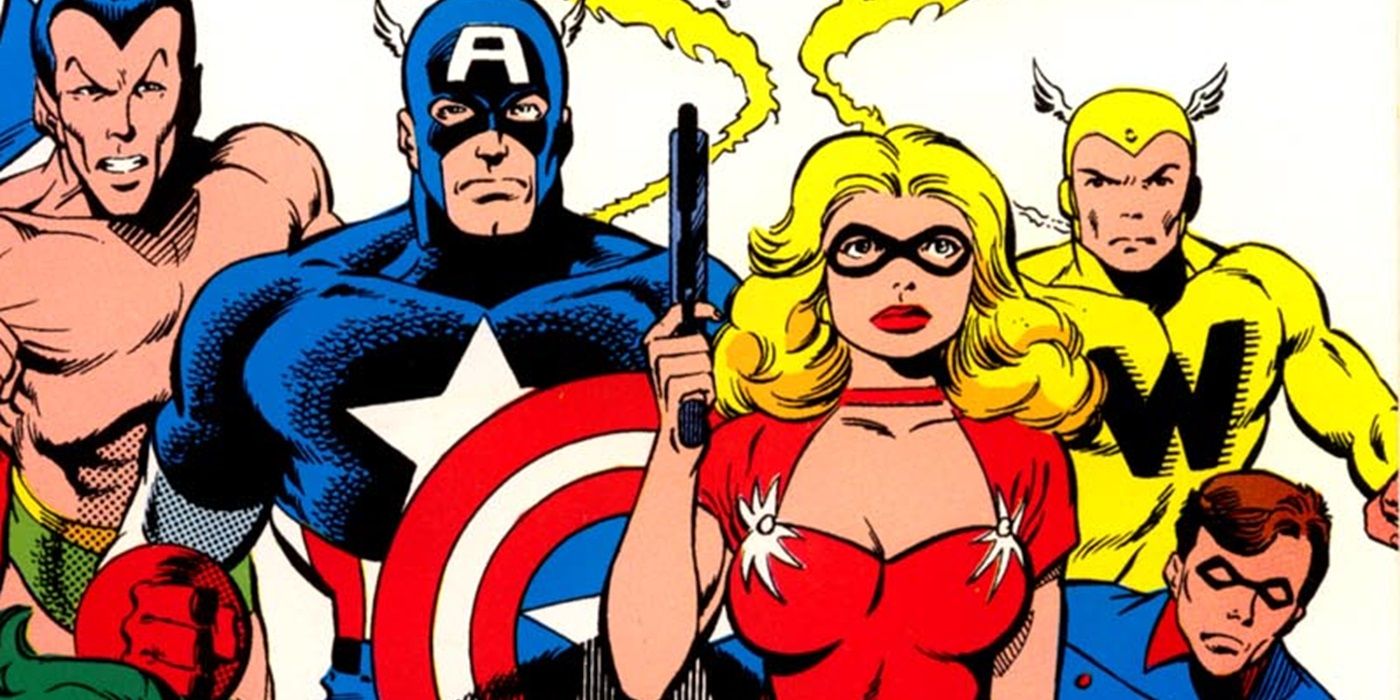
Blonde Phantom Was the Wolverine of Late 1940s Marvel Comics
For a brief period in the late 1940s, the superhero, Blonde Phantom, was as prolific of a Marvel Comics guest star as Wolverine was in the 1990s
Superman #75 was a blockbuster, so what do you do for Superman #100?
The first event of 1995 was tied into the fact that Superman was nearing #100. The Death of Superman was in Superman #75, so the 100th issue had to be a big deal, too, right?
Superman #100 was “The Death of Clark Kent” (the shiny foil cover was the same as a couple of other DC titles that all launched around the same time as Superman in 1987 – Justice League America, Flash and Wonder Woman), where the aforementioned Kenny Braverman/Conduit used his knowledge of Superman’s secret identity to strike at him, causing Superman to take Ma and Pa Kent on the road, and, in effect, “kill off” his Clark Kent identity…
This also saw Jurgens leave Superman as an artist, while remaining as the writer on the title. For a few months of the Superman titles, Clark and his parents traveled the country in an RV, but obviously, eventually Conduit was defeated, and Clark’s identity was secured, and he returned to his normal life. Gil Kane initially drew Superman after Jurgens left, but soon, Ron Frenz took over as the regular artist.
Later in the year, to coincide with the 50th issue of Superman: The Man of Steel, the Trial of Superman was launched!
Superman was in a pitched battle with the Parasite, who had absorbed so much of Superman’s power, that the Man of Steel was relatively weak, when suddenly an alien showed up to take him prisoner. He was taken by hyperspace travel to the world of the Tribunal, where Superman (whose ancestor HAD ultimately caused the destruction of Krypton) was put on trial for the actions of his ancestor, and was charged with murdering the billions of citizens of Krypton!
The storyline involved Superman being on trial, and after his conviction, his time in space-prison while awaiting his death sentence, plus, of course, Superboy, Supergirl, Steel, and Alpha Centurion (a short-lived Superman supporting cast member introduced in Zero Hour) team up to form the Superman Rescue Squad, and travel to bring Superman home.
The story also involved Cyborg-Superman, the villain behind The Reign of the Supermen, who also got involved in this storyline (taking advantage of the Tribunal to try to remake Warworld), and in the end, after Superman’s life is saved by a fellow prisoner taking his death sentence, and then the other members of the Tribunal commuting Superman’s death sentence to “life” continuing his never-ending battle for truth and justice. Cyborg-Superman was put to death, though, although since he can’t really DIE, they just put him into a black hole (I bet he would NEVER get out of that).
So, that was how the Superman titles directly responded to the success of the Death and Return of Superman! Maybe some day I’ll delve into 1996-1999!
If anyone has suggestions about interesting pieces of comic book history, feel free to drop me a line at brianc@cbr.com.
